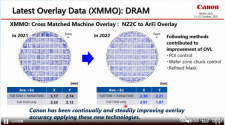You are using an out of date browser. It may not display this or other websites correctly.
You should upgrade or use an alternative browser.
You should upgrade or use an alternative browser.
Chinese semiconductor industry
- Thread starter Hendrik_2000
- Start date
- Status
- Not open for further replies.
no, that's SSA800/30wThe Mythical 22nm SSA900?
So sir, improve MMO plus increase power sources means a new machine? just like what ASML did to NXT 2050i? or SSA 900 designation is reserved for EUVi?no, that's SSA800/30w
I only know that Huawei is deeply involved in the development of EUV... as for the standard name of EUV... currently there is no informationSo sir, improve MMO plus increase power sources means a new machine? just like what ASML did to NXT 2050i? or SSA 900 designation is reserved for EUVi?
High speed and ultra precision
Laser interferometer calibration equipment
The metrology capabilities of domestic lithography machines have increased from 28nm to 7nm and below.

these news are absolute b.s.
NIL has been around for decades. Its issue/weakness are with defectivity and real-time overlay correction. Just because they claim they could do 2nm doesn't mean they could actually do so in real HVM setting. Can't believe everything you read from any media, western or Chinese.
Last edited:
more importantly, I don't think it really need to be at that level with overlay. I'd rather see a machine that can consistently operate at high work load in volume production of 28nm and 14nm environment. Those are more important factorsTo be honest this seems a bit too good to be true, albeit probably not outside the realm of technological possibility.
I think Paul gets how badly this might play outPaul Triolo's take on latest US export restriction updates
if we think that EUV is able to do high volume production in a few years and I think several of us are of that belief
I don't really see the point of having DUVi machine getting to overlay precision of 2050i. What's the point? You already have enough 2050i. Just have a solid DUVi lithography machine that can cover 40 to 14nm and be used in the DUVi steps of your future 5nm production.
Is that true? China might have stockpiled enough ASML 2050i to cover scaling up for the next few years, but not the indefinite future.I don't really see the point of having DUVi machine getting to overlay precision of 2050i. What's the point? You already have enough 2050i. Just have a solid DUVi lithography machine that can cover 40 to 14nm and be used in the DUVi steps of your future 5nm production.
I don't know about process logic like finfets or GAA but Japanese and even some SK memory makers are REALLY looking into this technology.these news are absolute b.s.
NIL has been around for decades. Its issue/weakness are with defectivity and real-time overlay correction. Just because they claim they could do 2nm doesn't mean they could actually do so in real HVM setting. Can't believe everything you read from any media, western or Chinese.
They claim improvements in defectivity by using a special resist.
They claim improvements in overlay by using a moire interferometry technique.

in 2018 They claimed improvements in throughput now closer to the earlier shipped EUV tools.
How big will be the adoption by memory makers? Will that adoption and improvements lead to its adoption by fabs like TSMC,Samsung and SMIC? And the more relevant to this thread, IF Canon is successful how this will affect the Chinese semiconductor equation?
This is relevant because China huge optoelectronics industry there are more players in the NIL space that there is in the projection lithography space "only one" and because NIL is export controlled by the Wassenaar the US will do anything to stop Canon from selling in China, that could lead to a cut throat competition among Chinese NIL players wanting to enter the semiconductor field, but all of that will depend on the success of Canon.
- Status
- Not open for further replies.
